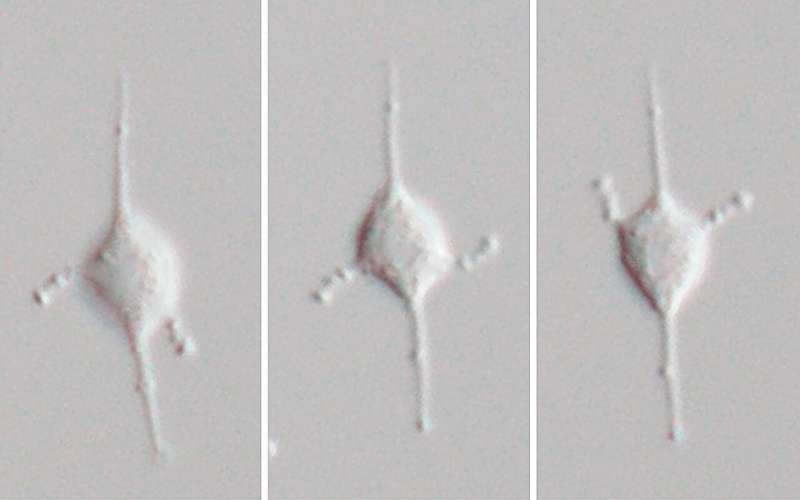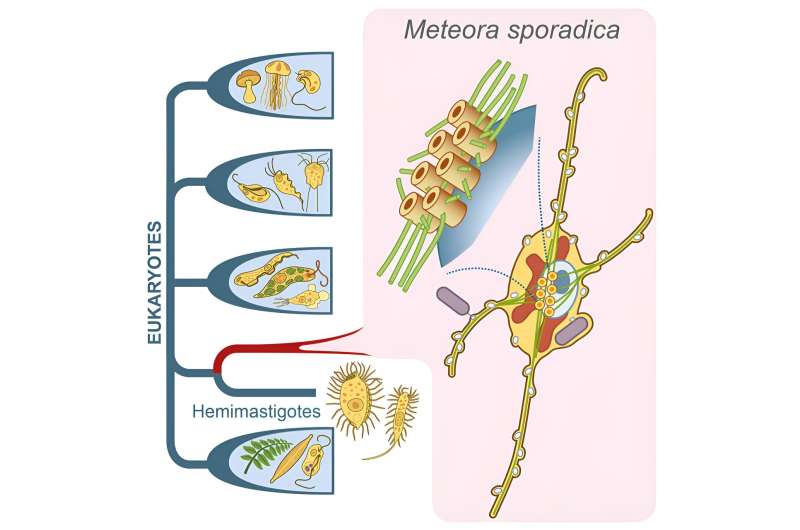This article has been reviewed according to Science X's editorial process and policies. Editors have highlighted the following attributes while ensuring the content's credibility:
fact-checked
peer-reviewed publication
trusted source
proofread
Researchers reveal cellular architecture, phylogenetic position of protist Meteora sporadica

Meteora sporadica is a small, unicellular eukaryote (protist) that was discovered in deep Mediterranean sea sediments in 2002. It differs from known protists by the presence of two lateral arms that swing back and forth. However, the ultrastructure and phylogenetic position of M. sporadica remain unknown.
In a new study, published in Current Biology, researchers successfully cultured and analyzed two strains of M. sporadica from marine sediments in detail. Ultratructural observations revealed that M. sporadica has a complex cytoskeleton, with lateral arms that are supported by microtubules extending from multiple microtubule-organizing centers (MTOCs) located in the center of the cell.
A large-scale molecular phylogenetic analysis using amino acid sequences of 254 genes revealed that M. sporadica is not associated with any of the major eukaryotic lineages (supergroups) identified to date, but is closely related to Hemimastigophora, a group of protists considered to be one of the most deep-branching eukaryotes.
Interestingly, Hemimastigophora is composed of large protists with numerous flagella and no arms or MTOCs. This study demonstrates that Meteora and Hemimastigophora represent a morphological diversity that is comparable to other supergroups. Identifying and analyzing poorly studied protists, such as M. sporadica, is essential for elucidating the phylogeny and diversity of eukaryotes.

More information: Yana Eglit et al, Meteora sporadica, a protist with incredible cell architecture, is related to Hemimastigophora, Current Biology (2024). DOI: 10.1016/j.cub.2023.12.032
Journal information: Current Biology
Provided by University of Tsukuba





















